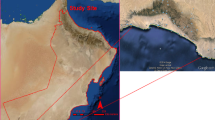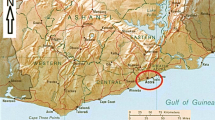Abstract
One of the most pressing issues in studying the impacts of sea level rise (SLR) triggered by climate change is understanding the development of the hazard of permanent coastal flooding. The issue persists because available approaches are based on the mapping of the inundated area where they explore the coastal flooding development across terrain elevations, that is—horizontally. In addition, they overlook the existing structures along or in the vicinity of the coastline, which have inherent hydraulic properties that may affect the development of such flooding. The purpose of this study is to develop a novel approach for assessing the development of permanent coastal flooding due to SLR at cross sections along the coastline, that is—vertically, in full consideration of underlying hydraulic properties of the existing coastline. An approach was developed using analogy of existing coastline to a contiguous weir. This approach was named crestline approach and was developed as a four step GIS-based approach that could be applied at any coastal zone. An example application on one of the top ranked cities in the world prone to the SLR threat has been provided to illustrate exactly how to apply the crestline approach. The novelty of this approach lies in its ability to accurately identify the specific locations where coastal flooding will initiate, in full consideration of existing natural/manmade coastal structures. This study is significant for the opportunities it provides to analysts and decision makers to better understand the development of permanent coastal flooding.












Similar content being viewed by others
References
Arab Academy for Science Technology and Maritime Transport (AASTMT), Egis-BCEOM International (2011) Climate change adaptation and natural disasters preparedness in the coastal cities of North Africa. Phase 1: Risk assessment for the present situation and horizon 2030 - Alexandria area. The World Bank, Washington, DC
Bekheet RA (2013) Vulnerability and risk assessment of Alexandria city to sea level rise. Doctoral Dissertaion. Alexandria University, Alexandria, Egypt
Bromwich DH, Nicolas JP, Monaghan AJ et al (2013) Central West Antarctica among the most rapidly warming regions on Earth. Nat Geosci 6(2):139–145
Brooks N, Nicholls R, Hall J (2006) Sea-level rise: coastal impacts and responses. German Advisory Council on Global Change (WBGU), Berlin, Germany
Central Agency for Public Mobilization and Statistics (CAPMAS) (2013) Statistical Year Book 2013. CAPMAS, Cairo, Egypt
Chin DA (2014) Water-resources engineering. Pearson Education, Upper Saddle River, NJ, USA
Church JA, Clark PU, Cazenave A et al (2013a) Sea level change. In: Stocker TF et al (eds) Climate Change 2013: The Physical Science Basis. Cambridge University Press, Cambridge, UK and New York, USA, pp 1137–1216
Church JA, Monselesan D, Gregory JM et al (2013b) Evaluating the ability of process based models to project sea-level change. Environ Res Lett 8(1):014051
Dasgupta S, Laplante B, Meisner C et al (2007) The impact of sea level rise on developing countries: a comparative analysis. The World Bank, Washington, DC
Dasgupta S, Laplante B, Meisner C et al (2009) The impact of sea level rise on developing countries: a comparative analysis. Clim Chang 93(3-4):379–388
El-Raey M, Fouda Y, El-Iskandarani E (2006) Potential impact of sea level rise on Marina El-Alamein tourist resort, Egypt. In: 1st International Conference on Environmental Change of Lakes, Lagoons and Wetlands of the Southern Mediterranean Region (ECOLLAW), University College London (UCL) and the National Authority for Remote Sensing and Space Sciences (NARSS), Cairo, Egypt, 4-7 January 2006
El-Raey M, Regional Center for Disaster Risk Reduction (RCDRR) (2010) Impact of sea level rise on the Arab Region. UNDP Regional Bureau for Arab States (UNDP-RBAS), Cairo, Egypt
Elsharkawy H, Rashed H, Rashed I (2009) Climate change: the impacts of sea level rise on Egypt. In: 45th ISOCARP International Congress on Low Carbon Cities, Porto University, Porto, Portugal, 18-22 October 2009
Field CB, Barros VR, Mach K et al (2014) Climate change 2014: impacts, adaptation, and vulnerability. Cambridge University Press Cambridge, New York, NY
Frihy OE (2003) The Nile delta-Alexandria coast: vulnerability to sea-level rise, consequences and adaptation. Mitig Adapt Strateg Glob Chang 8(2):115–138
Gesch DB (2013) Consideration of vertical uncertainty in elevation-based sea-level rise assessments: Mobile Bay, Alabama case study. J Coastal Res 63(sp1):197–210
Google Earth (2013) Alexandria, Egypt 30°5'7.28"N, 31°16'55.79"E. http://www.google.com/earth/index.html. Viewed March 15, 2013
Hinkel J, Jaeger C, Nicholls RJ et al (2015) Sea-level rise scenarios and coastal risk management. Nat Clim Chang 5(3):188–190
Hinkel J, Lincke D, Vafeidis AT et al (2014) Coastal flood damage and adaptation costs under 21st century sea-level rise. Proc Natl Acad Sci 111(9):3292–3297
Horton BP, Rahmstorf S, Engelhart SE et al (2014) Expert assessment of sea-level rise by AD 2100 and AD 2300. Quat Sci Rev 84:1–6
Jarvis A, Reuter HI, Nelson A et al. (2008) Hole-filled SRTM for the Globe Version 4. http://srtm.csi.cgiar.org. Cited August 19, 2008
Lewis M, Horsburgh K, Bates P et al (2011) Quantifying the uncertainty in future coastal flood risk estimates for the UK. J Coast Res 27(5):870–881
Musa Z, Popescub I, Mynetta A (2010) Uncertainty in hydrodynamic modeling of flooding in the lower Niger river with downstream sea level rise. In: SimHydro 2010: Hydraulic modeling and uncertainty, Sophia-Antipolis, France, 2-4 June 2010
National Oceanic and Atmospheric Administration (NOAA) (2016) Sea Level Rise Modeling. Available via Office of Coast Survey, National Oceanic and Atmospheric Administration (NOAA), U.S. Department of Commerce http://www.nauticalcharts.noaa.gov/csdl/sealevelrise.html. Cited 28 March, 2016
Nazarenko L, Schmidt G, Miller R et al (2015) Future climate change under RCP emission scenarios with GISS ModelE2. J Adv Model Earth Syst 7(1):244–267
Neumann T, Ahrendt K (2013) Comapring the “Bathtub Method” with MIKE 21 HD flow model for modelling storm surge inundation. Ecologic Institute, Berlin, Germany
Nicholls R, Hanson S, Herweijer C et al (2007) Ranking of the world’s cities most exposed to coastal flooding today and in the future. Organisation for Economic Co-operation and Development (OECD), Paris, France
Pachauri RK, Meyer L, Team CW (2015) Climate Change 2014: Synthesis Report. The Intergovernmental Panel on Climate Change (IPCC), Geneva, Switzerland
Parry ML, Canziani OF, Palutikof JP et al (2007) Climate change 2007: Impacts, adaptation and vulnerability. The Intergovernmental Panel on Climate Change (IPCC). Cambridge University Press, Cambridge, UK
Passeri DL, Hagen SC, Medeiros SC et al (2015) The dynamic effects of sea level rise on low‐gradient coastal landscapes: a review. Earth’s Future 3(6):159–181
Pierce DW, Barnett TP, Gleckler PJ (2011) Ocean circulations, heat budgets, and future commitment to climate change. Annu Rev Environ Resour 36(1):27
Pike J (2011) Military Facilities Alexandria, Egypt/Port of Dekheila. Available via GlobalSecurity.org http://www.globalsecurity.org/military/facility/alexandria.htm. Cited June 3, 2012
Sahin O, Mohamed S (2010) Sea level rise and adaptation responses for coastal construction: A spatial temporal decision making tool. Paper presented at the Second International Conference on Construction in Developing Countries (ICCIDC–II), NED University of Engineering and Technology, Florida International University and Misr for Services and Maintenance, Cairo, Egypt, 3-5 August 2010
Schmid K, Hadley B, Waters K (2013) Mapping and Portraying Inundation Uncertainty of Bathtub-Type Models. Journal of Coastal Research: 548-561. DOI 10.2112/JCOASTRES-D-13-00118.1
Stanley J, Bernasconi M, Jorstad T (2008) Pelusium, an ancient port fortress on Egypt’s Nile Delta coast: Its evolving environmental setting from foundation to demise. J Coast Res 24(2):451–462
Thompson LG (2010) Climate change: The evidence and our options. Behav Anal 33(2):153
Van Vuuren DP, Edmonds J, Kainuma M et al (2011) The representative concentration pathways: an overview. Clim Chang 109:5–31
Watson CS, White NJ, Church JA et al (2015) Unabated global mean sea-level rise over the satellite altimeter era. Nat Clim Chang 5(6):565–568
Webster P, Holland G, Curry J et al (2005) Changes in tropical cyclone number, duration, and intensity in a warming environment. Science 309(5742):1844–1846
Wong PP, Losada IJ, Gattuso J et al (2014) Coastal systems and low-lying areas. In: Field C et al (eds) Climate change 2014: impacts, adaptation, and vulnerability. Part A: global and sectoral aspects. Cambridge University Press, Cambridge, UK and New York, USA, pp 361–409
Wurbs RA, James WP (2002) Water resources engineering. Prentice Hall, Upper Saddle River, NJ, USA
Author information
Authors and Affiliations
Corresponding author
Rights and permissions
About this article
Cite this article
Bekheet, R.A., El Raey, M. & Yassin, AED. The crestline approach for assessing the development of coastal flooding due to sea level rise. Mitig Adapt Strateg Glob Change 22, 1113–1130 (2017). https://doi.org/10.1007/s11027-016-9717-9
Received:
Accepted:
Published:
Issue Date:
DOI: https://doi.org/10.1007/s11027-016-9717-9




